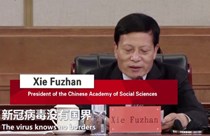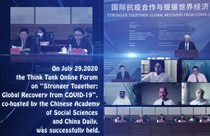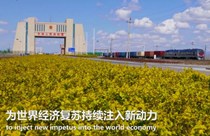China must balance economy, ecology to sustain development
Author : Chen ShiYi Source : Chinese Social Sciences Today 2016-05-03
The reform and opening-up policy unleashed three decades of rapid economic growth that transformed China into the world’s second-largest economy. However, under a laissez faire policy, low-end manufacturing and other pollution-intensive industries have come to dominate the Chinese economy. The energy intensity of China’s GDP is not only higher than that of the United States and developed countries in Europe but also it exceeds that of emerging economies, such as Brazil. China’s growth model is no longer viable, and the myriad environmental problems it creates will choke future development, so it is imperative for scholars and policymakers to turn their attention to issues of energy, economy and the environment.
National economic blueprints
In response to the economic status quo that Chinese leadership have termed the “new normal,” the government has launched several national strategic plans, including the “Belt and Road” project, the Free Trade Area initiative, the Yangtze River Economic Zone, and the economic integration of Beijing, Tianjin, and Hebei Province. Signaling a new round of domestic reform and economic opening-up, these plans will transform China’s development model and economic structure. They form the foundation of the country’s long-term economic prospects and global strategic layout. It is necessary for the central and provincial governments to take into account the global and local dimensions of environment and energy factors that could affect the outcome of these plans. To be more specific, global trends have more of an impact on multinational projects like the “Belt and Road” and the Free Trade Area initiative.
Energy, environment
The “Belt and Road” initiative is pivotal to China’s economic development. Investing in infrastructure projects overseas will allow China to boost exports, channel out production capacity and mitigate environmental pressure. Bilateral and multilateral projects, such as the China-Central Asia energy pipeline, the China-Russia Oil and Gas Pipeline, the China-Pakistan Energy Corridor, the China-Burma Energy Channel and power grid, and the Maritime Silk Road energy hub, will forge an interconnected regional energy network that will facilitate shared development and diversify China’s energy imports while ensuring the country’s energy and economic security.
Chinese enterprises doing business overseas will be expected to formulate rigorous environmental standards, assess the environmental impact of each commercial project and implement green practices in all aspects of production and operations. These requirements will motivate Chinese manufacturing enterprises to move up the value chain while promoting a positive national image. In regions with a complex geopolitical landscape, such as the Middle East, Chinese companies will try their best to avoid environmental blunders that cause tension with local governments and communities.
Ecological issues are also central to the FTA initiative, and the use of environmental standards when establishing trade barriers is an emerging global trend. For example, under the framework of the US-led Trans-Pacific Partnership Agreement, there are restrictions regarding the total carbon emissions created by the production process of commodities in trade. To further its aim of achieving domestic reform as well as the transformation of commerce and trade, the FTA initiative ought to capitalize on environmental issues. Policy -makers should anticipate trade barriers that China may encounter in the future and move toward solutions.
Energy and the environment are also crucial to the creation of the Yangtze River Economic Zone and the economic integration of Beijing, Tianjin, and Hebei Province. These economically vital areas remain beset by environmental problems.
Role of government
When incorporating energy and environment factors into China’s economic strategy, policy-makers ought to capitalize on market forces while preserving top-down planning for its obvious merits.
First and foremost, government agencies at all levels should endeavor to reform the energy pricing mechanism, which will increase the efficiency of energy production and utilization. At the moment, market signals do play a crucial role in the mining industry, while petrochemical and electricity power sectors have yet to be sufficiently marketized.
Consequently, energy is inefficiently allocated and haphazardly wasted, resulting in a series of grave problems, such as excessive energy consumption and pollution. If emissions reduction is predicated on increased energy efficiency, it is undoubtedly necessary to reform energy pricing.
Governments are currently focusing on incremental reform of household electricity consumption, which will put a halt on the distorted price of household electricity consumption. The price reform of manufactured petrochemical goods is based on open competition. Governments should ease price regulations gradually to allow price mechanisms to more efficiently allocate energy and other resources.
Government agencies must adopt environmental taxation and experiment with emissions trading. Academia has long advocated environmental taxation, but the government declined to implement it for a number of reasons: Domestic companies could not bear the burden, the national economy has been facing acute downward pressure, and the world has yet to fully recover from the 2008 financial crisis.
Shenzhen, Beijing, Shanghai, Tianjin, Chongqing, Guangdong Province and Hubei Province have already established pilot exchanges for carbon trading, and this mechanism might be implemented nationwide by the end of this year. It is projected that this year’s carbon trading volume will fall into a range between 3 billion to 4 billion tons. Executing environmental taxation should be relatively easy since it has nothing to do with property rights, but carbon trading is a more efficient means of reducing carbon dioxide emissions, therefore a two-pronged approach is needed to balance energy, the environment and the economy.
The government must guide energy conservation and emissions reduction. At the moment, market forces cannot replace government intervention as the primary instrument of conserving energy and reducing emissions. Governments play a key role in traffic control, shutting down heavy polluters, and fighting air pollution in metropolitan areas, such as Beijing. In heavily polluted areas, local governments formulate long-term industrial development policies to support green enterprises while restricting the proliferation of energy-intensive, heavily polluting industries, facilitating industrial transformation, and advancing the environmental agenda.
China’s energy efficiency has been on the rise for decades. Nonetheless, overall energy consumption and emissions have grown, too. Logically, governments should tackle the issue on the macroeconomic level. The 8 percent to 10 percent emission reduction target of chemical oxygen demand, sulfur dioxide, ammonia nitrogen, and nitrogen oxide as a whole is rational and achievable. In the future, government should impose a cap on total carbon dioxide emissions as soon as possible.
Structural transformation is vital to sustainable, reasonably strong economic growth. The carrying capacity of China’s ecosystem has almost reached its limit, so energy conservation and emissions reduction are not optional. China urgently needs sensible policies to promote economic transformation, strategic planning and sustainable development as well as to achieve energy and ecological goals.
Chen Shiyi is deputy dean of the School of Economics at Fudan University.
Ye Shengtao made Chinese fairy tales from a wilderness
Ye Shengtao (1894–1988) created the first collection of fairy tales in the history of Chinese children’s literature...
-
How northern ethnicities integrated into Chinese nation
2023-09-18
-
Mogao caves
2023-09-12
-
Mogao Grottoes as ‘a place of pilgrimage’
2023-09-12
-
Time-honored architectural traditions in China
2023-08-29
-
Disentangling the civilizational evolution of China
2023-08-28
-
AI ethics in science fiction
2023-08-23














 2011-2013 by www.cssn.cn. All Rights Reserved
2011-2013 by www.cssn.cn. All Rights Reserved